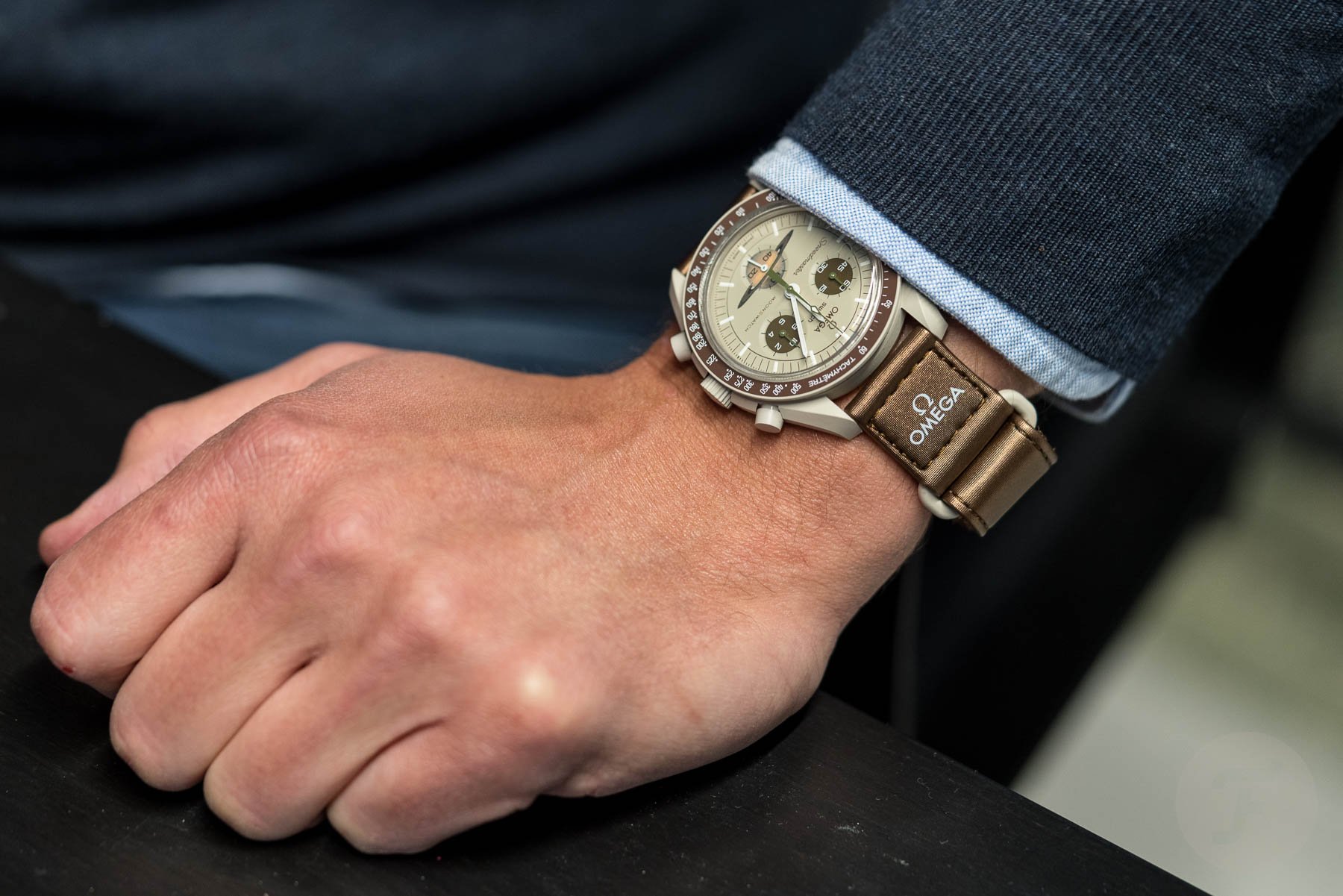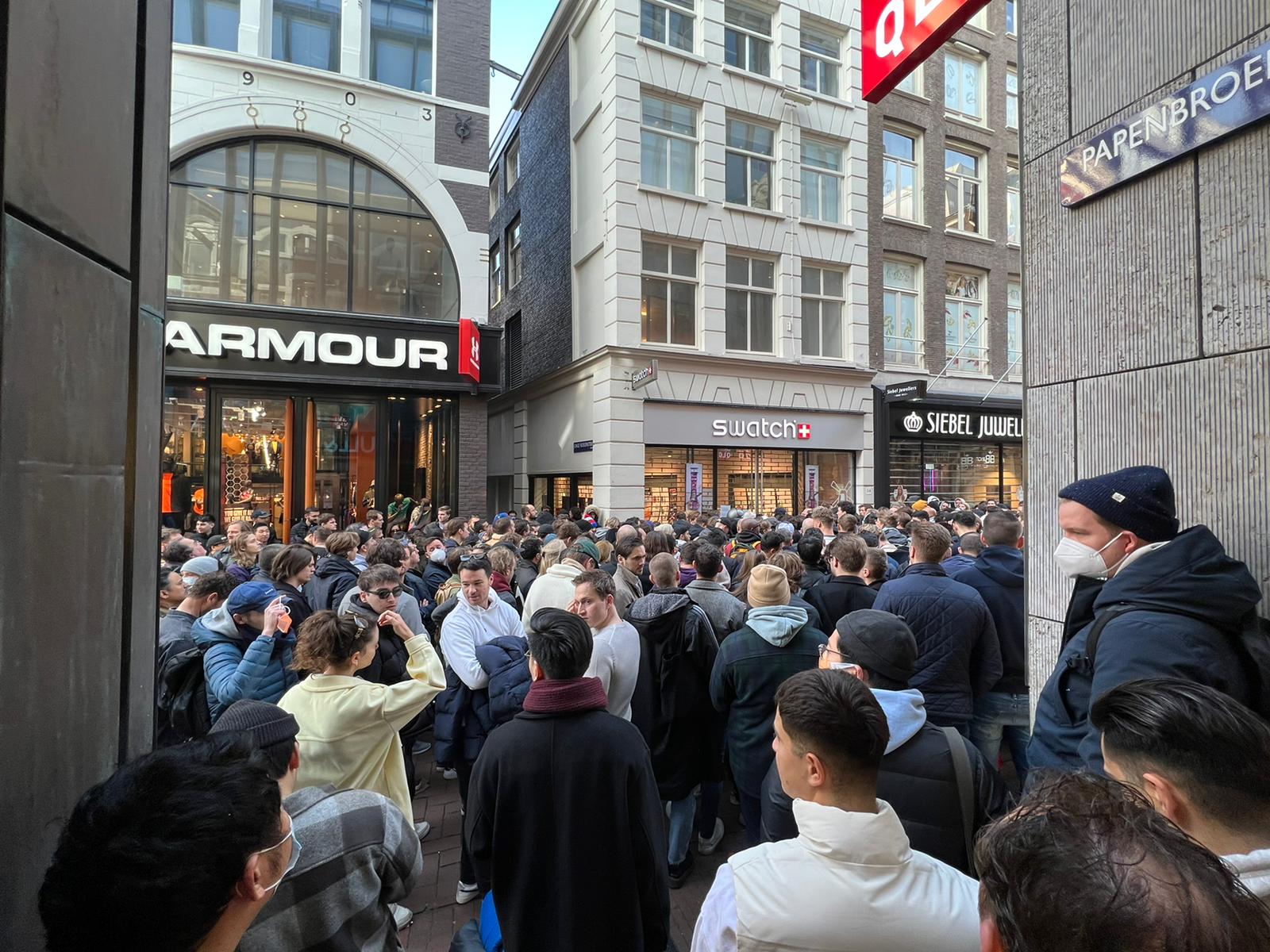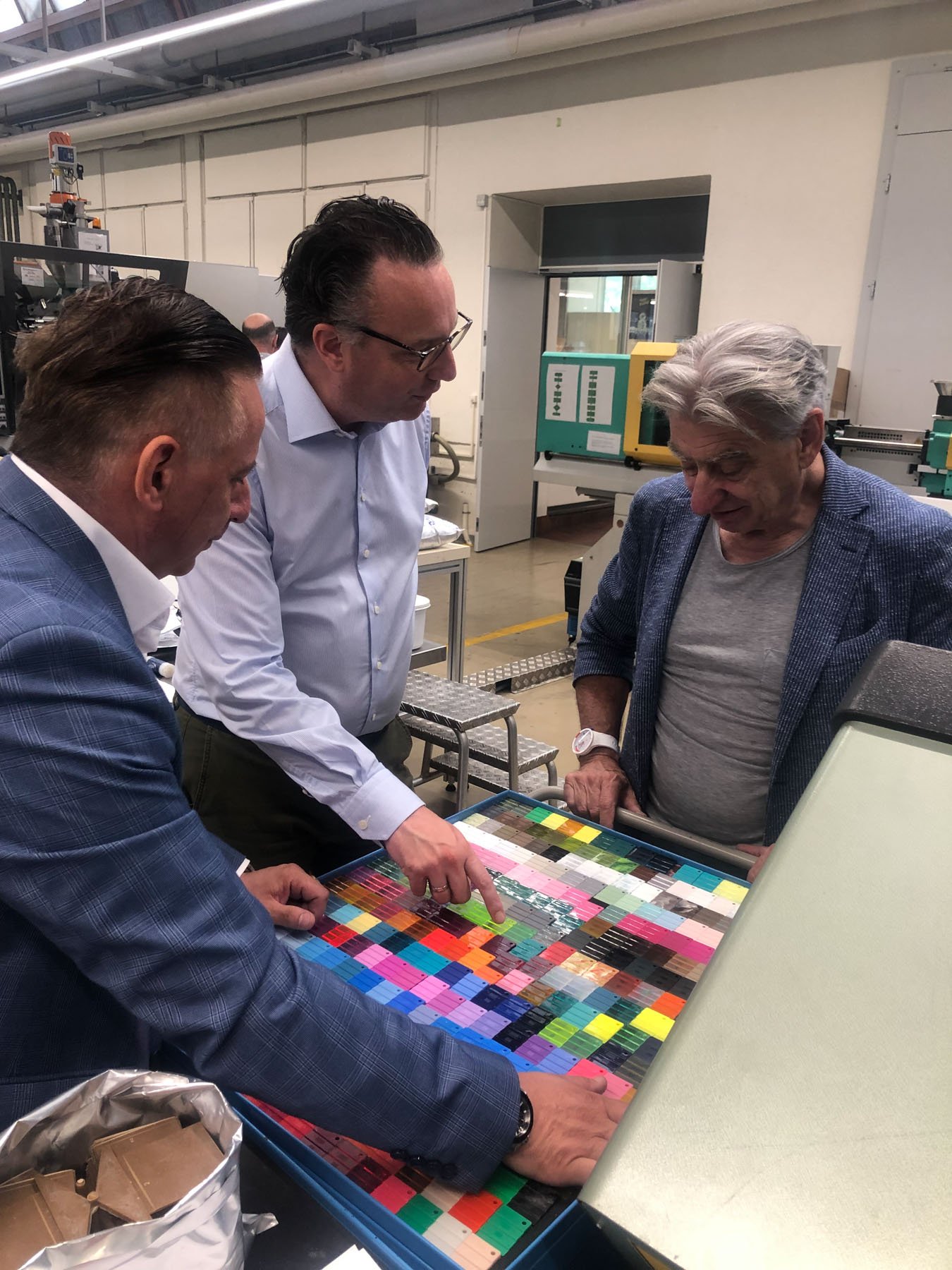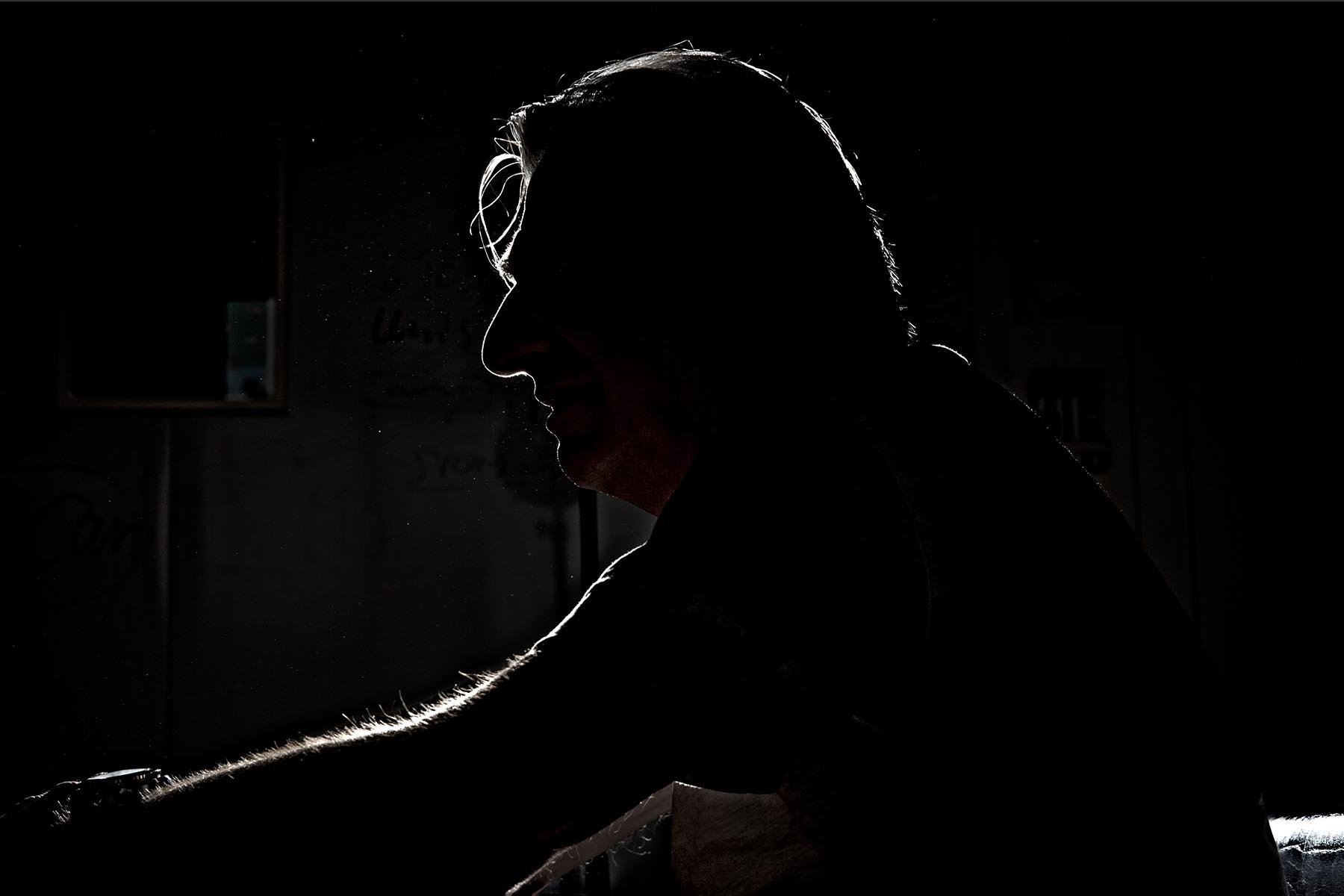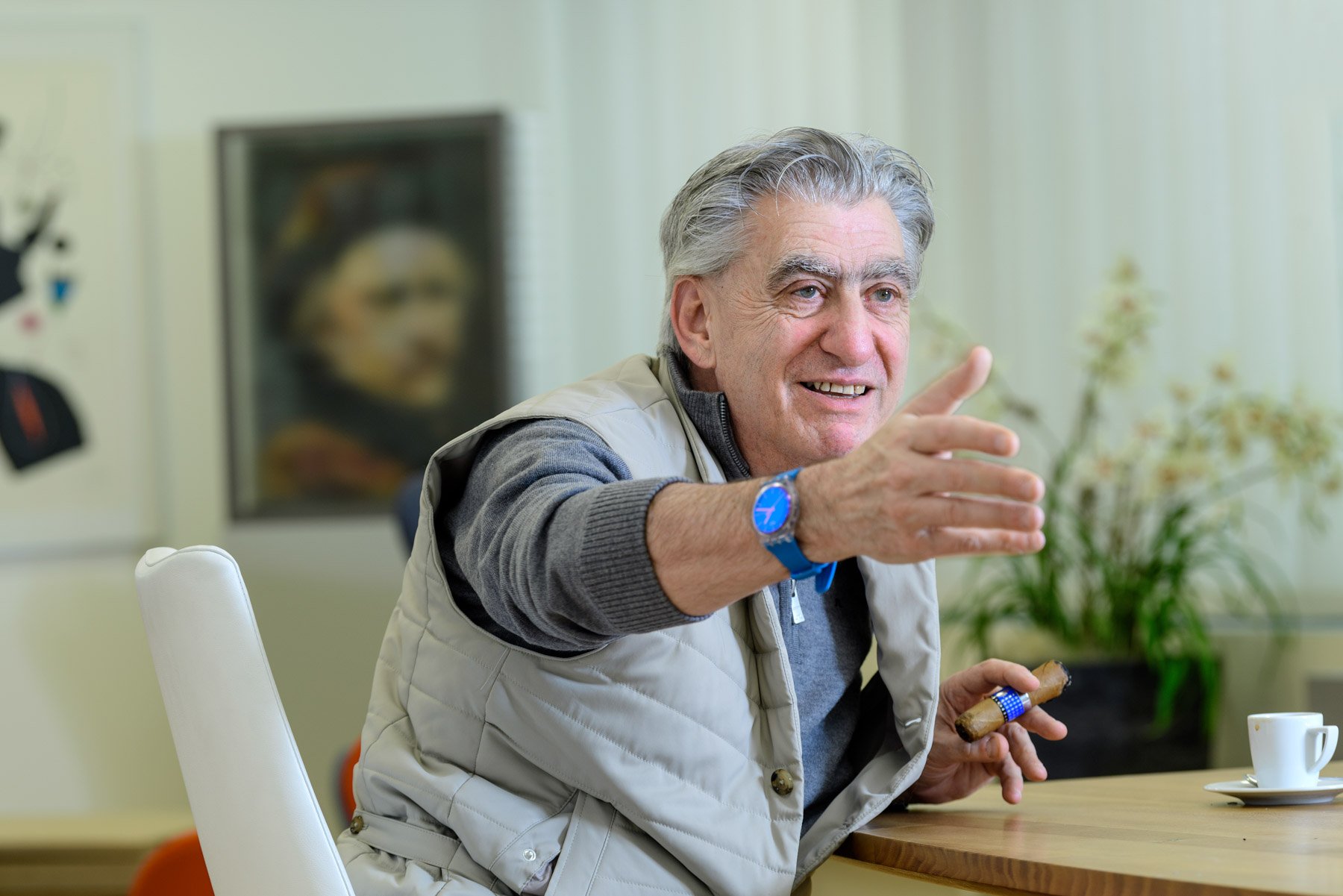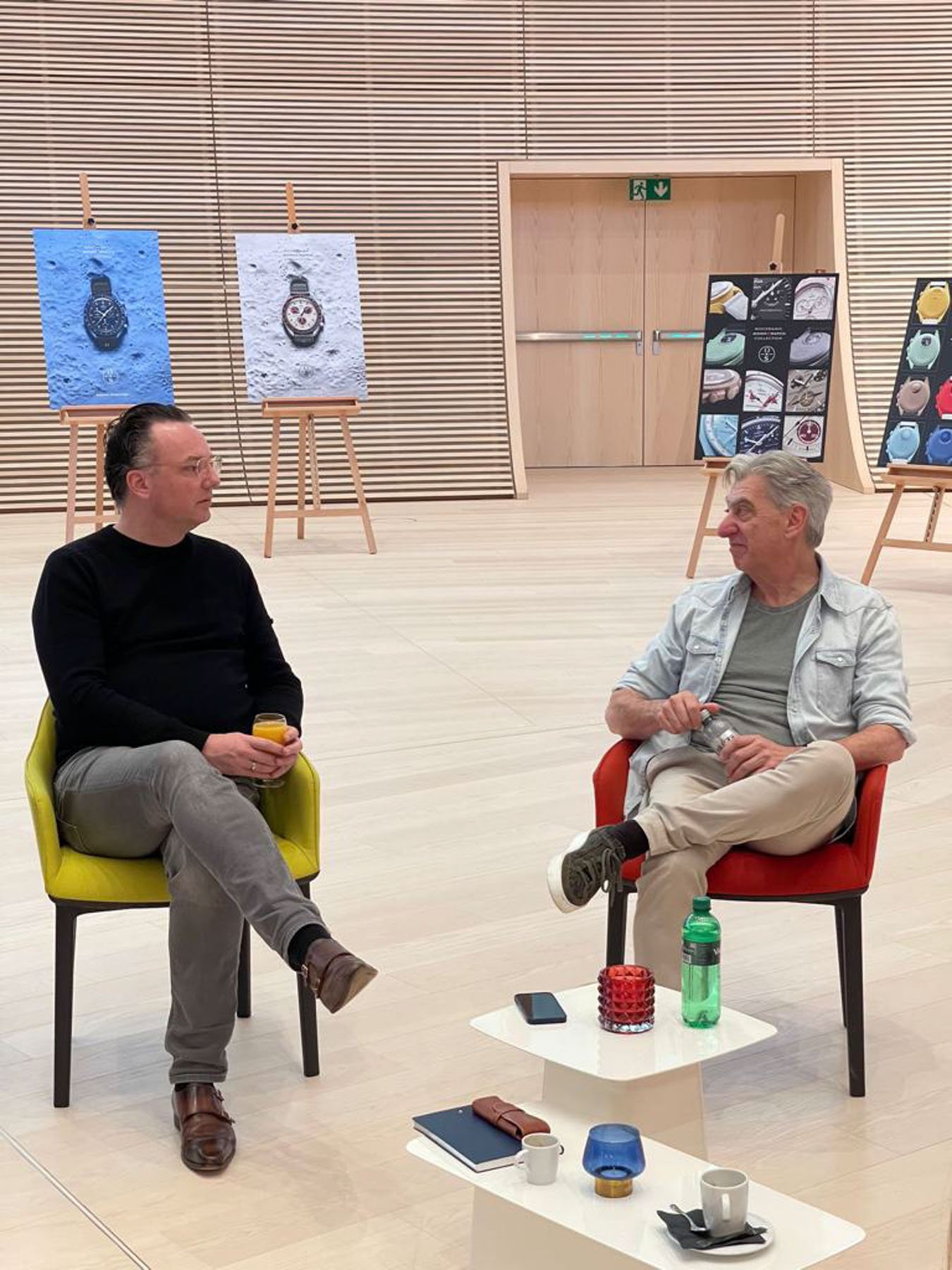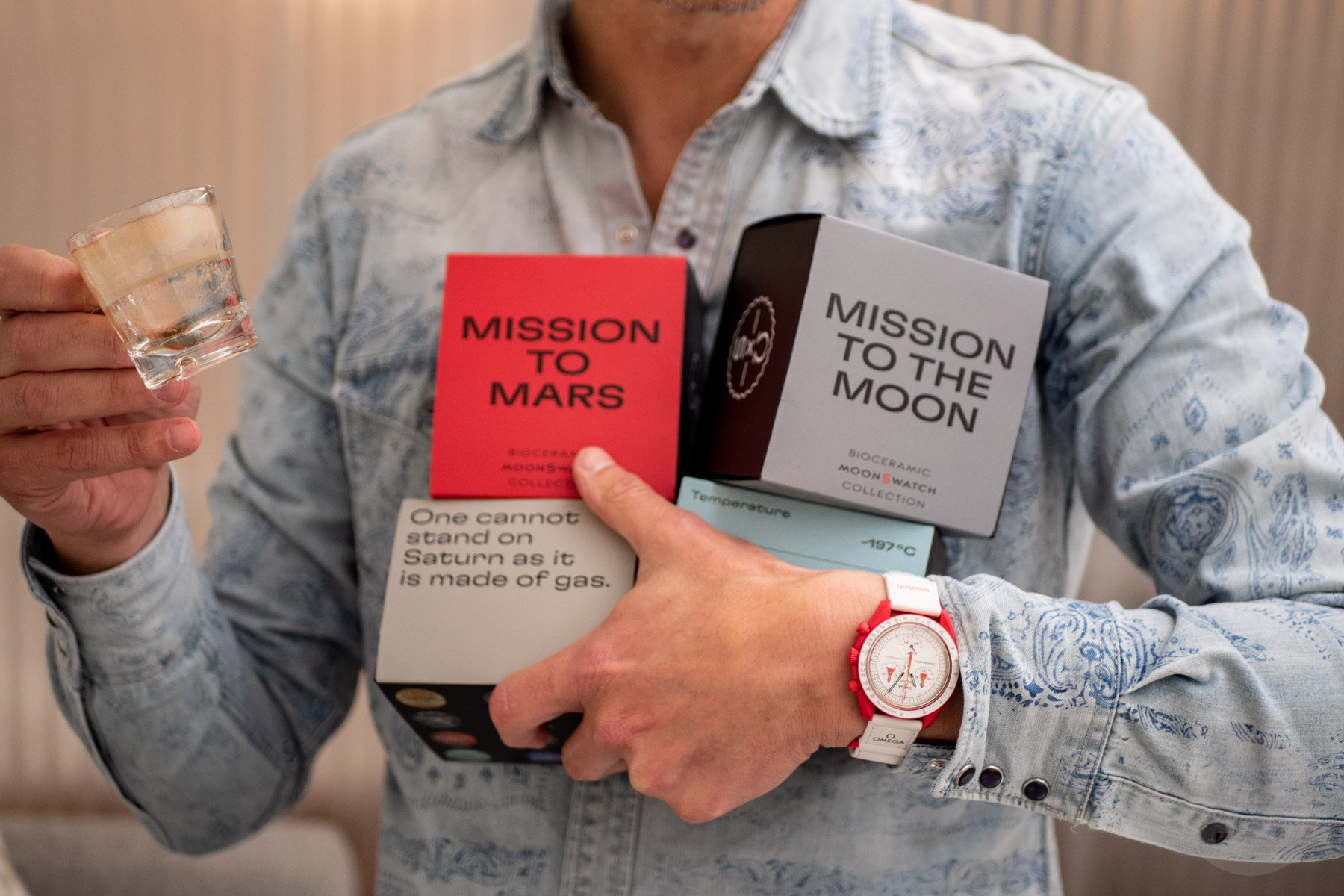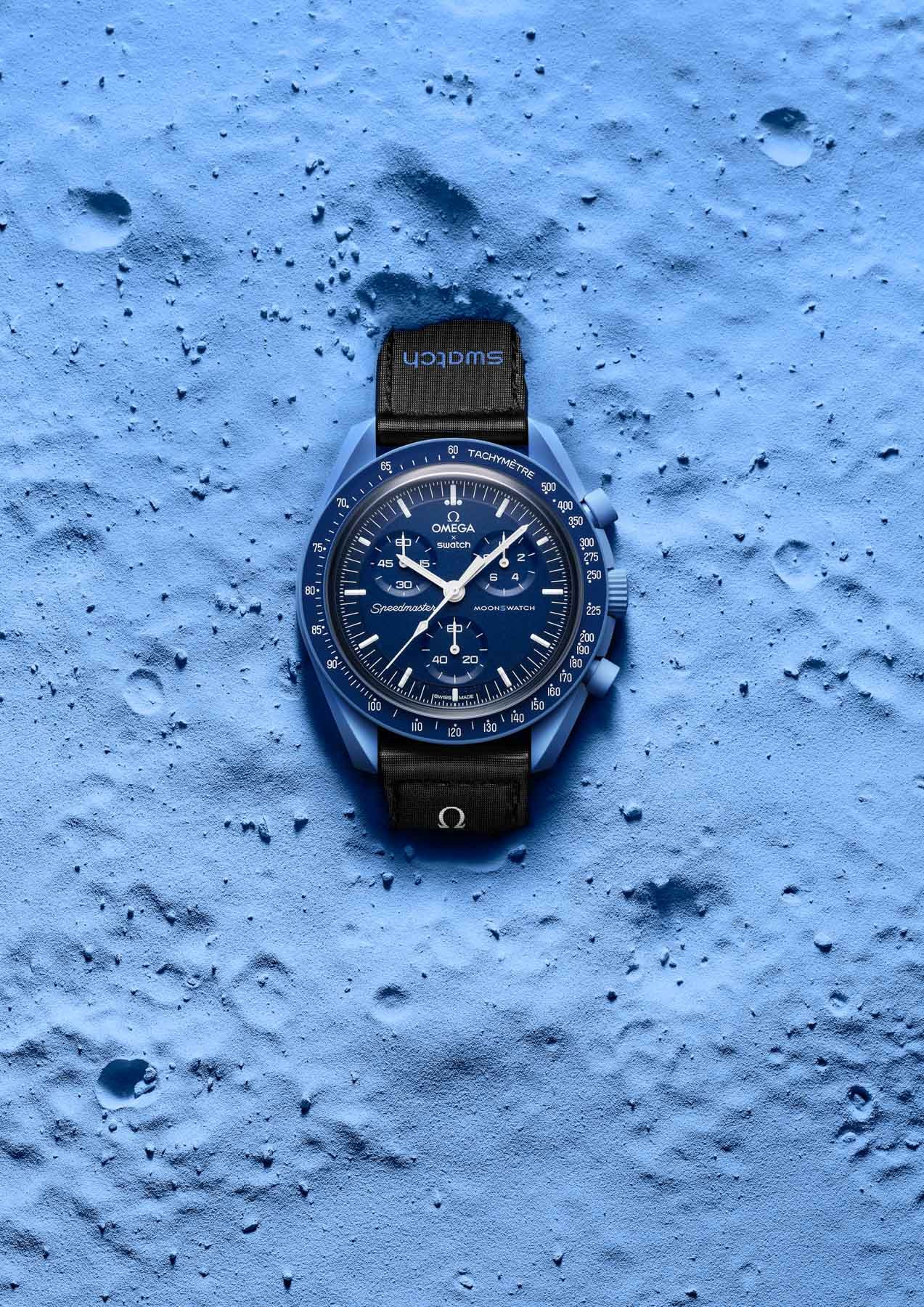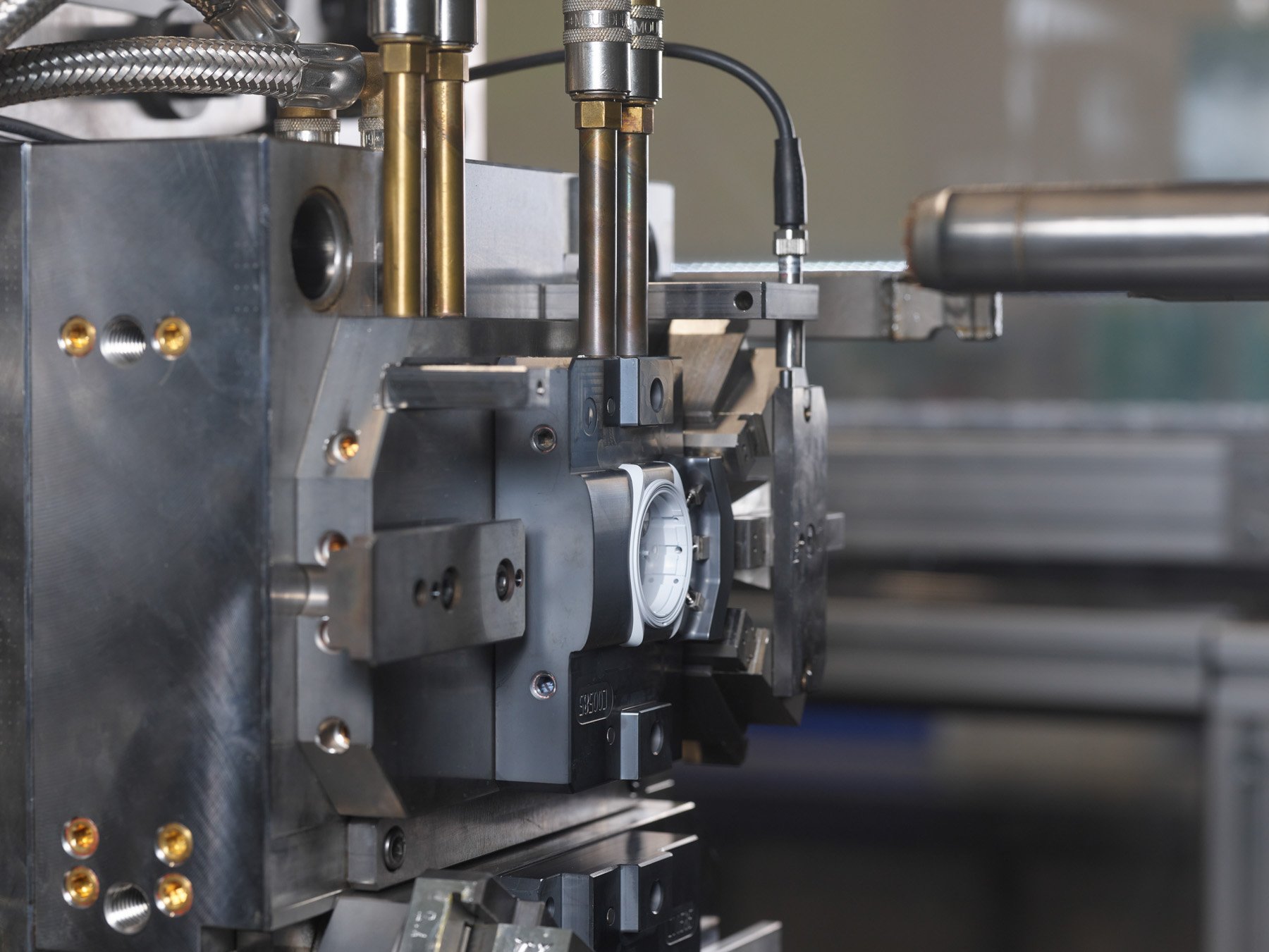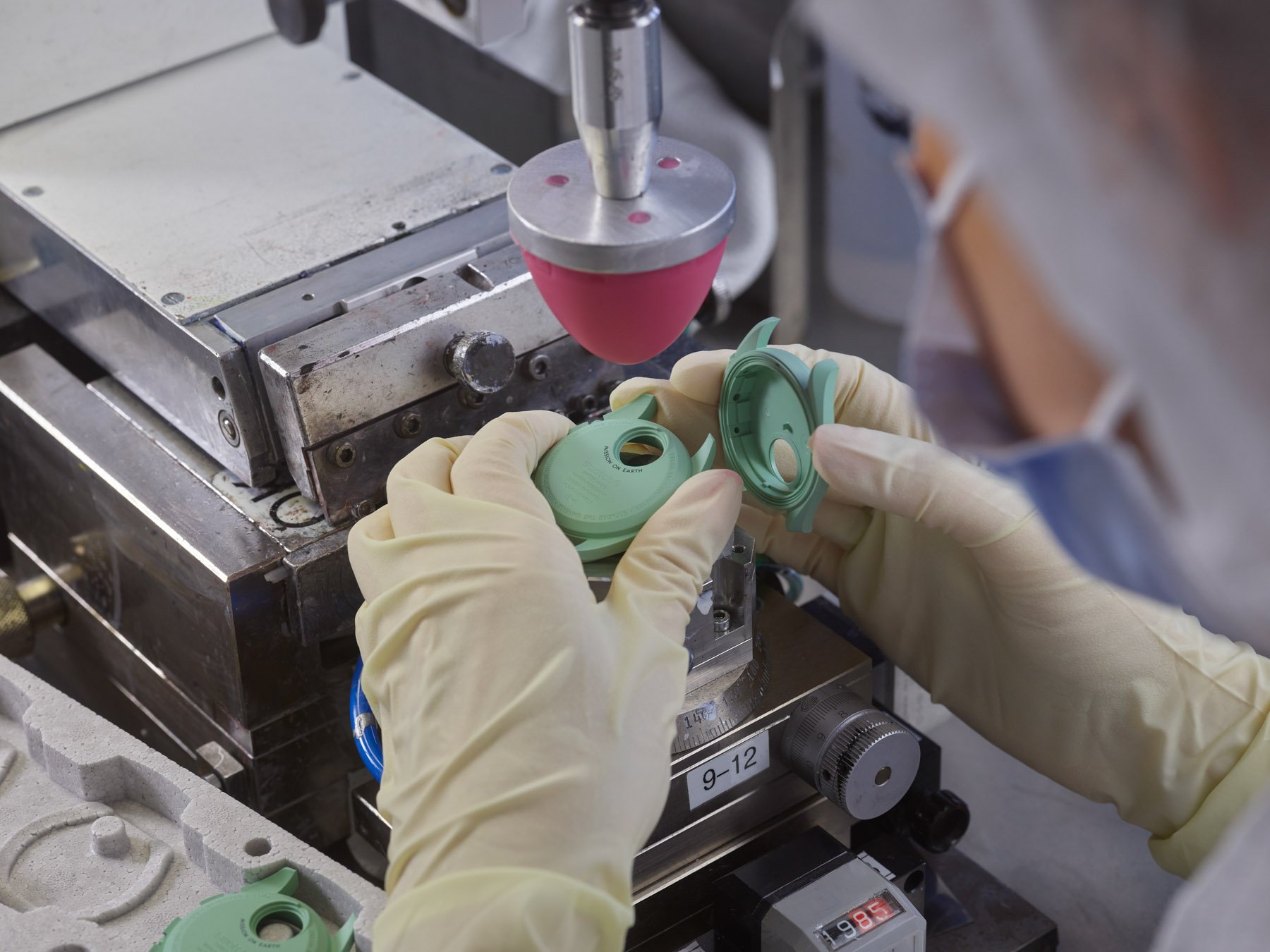We Talk To Swatch Group CEO Nick Hayek About The MoonSwatch
It’s a Thursday morning, and I am waiting in the lobby of the Swatch Group building in Biel, Switzerland. I am a few minutes early for my meeting with CEO Nick Hayek, so I have time to look around in the large lobby. On a shelf, there are brochures of every Swatch Group brand… except for Swatch. Instead, there’s a little card that lets me know all watches can be seen on the Swatch website to save paper. Already here, it shows that Swatch has a certain mentality that will speak to the young generation while making other generations aware that there’s a different possibility of doing things.
A meeting in Nick Hayek’s office
They don’t keep me waiting long, and a few moments later, Mr. Nick Hayek welcomes me into his office. We’ve met on a few occasions before, at Baselword in the past and, most recently, in March right before the launch of the 11 different Bioceramic MoonSwatch models. Using Omega as a cover-up, he had organized this sneak preview for a very small group of journalists where we could see the watches and exchange ideas and thoughts about it in all openness.
Now, it’s been over three months since the introduction of the MoonSwatch, and I would love to ask him some questions that we — as Fratello — often see in the comments. Later this day, I will get to see large parts of the MoonSwatch production with my own eyes. But before that, I sit down with Nick Hayek to talk about the MoonSwatch and what it has caused.
Five thousand people in the queue
First, he shows me what hangs outside of his office — not a Swiss flag but a huge pirate flag, highly visible from the park in front of the Swatch Group headquarters. It symbolizes the Swatch spirit, the Swatch DNA:“[To] challenge the rules through positive provocation and joy of life paired with innovation and, of course, [staying] Swiss Made,” Hayek says. It has been hanging outside of his office since 2003 when he took over the role of CEO of Swatch Group coming from Swatch. It is clearly also his DNA. Swatch is a brand with the power to reach everybody from young to old, regardless of their background. So, logically, you would expect to find the MoonSwatch in huge mass distribution worldwide. But that’s not the case, and it’s the first of many disruptive elements of this product and its incredible launch.
Hayek explains that the MoonSwatch is only available in 110 Swatch boutiques worldwide and on no e-commerce platforms. When boutiques in Australia were about to be the first to open in the world on March 26th, he got a phone call from Australia telling him, a bit shocked, that a queue of no less than 5,000 people had been waiting for three hours in front of the door of the 35m² store in Sydney. “Wow, what a hell of a news, exciting but also somewhat scary.”
From two to one MoonSwatch per customer
Shortly afterward, he also got a video via WhatsApp of this never-ending peaceful queue. He immediately gave the order to change the policy of allowing two MoonSwatches to be sold to a customer to one only. Yes, he and Swatch expected the MoonSwatch to become a huge success, but this massive run for them was not something anybody could have imagined, especially because it was clearly communicated that this collection would not be limited. It was a strong contrast to all these collaborations between brands that count on creating hype by pushing limited editions. We’ve all seen the footage on social media channels, and even some of the Fratello staff went out to boutiques to see the queues — it was crazy. I can’t recall when mainstream media had ever given coverage to a watch, but suddenly, the MoonSwatch was everywhere, from news channels on TV to getting attention in the daily newspapers.
I ask Nick Hayek whether there has been a Swatch watch in the past that caused the same kind of stir. “Not on this level and certainly not for an unlimited product and not in this instant way. Social media did not exist in 1983 when Swatch was launched. So it’s not really comparable”, he says.
Project Galileo — How the MoonSwatch came to life
One of the key aspects of the MoonSwatch project, with the internal code name “Project Galileo”, was its absolute secrecy. It all started in spring 2021, and only a handful of people at Swatch, Omega, and ETA have been involved by Nick Hayek.
“Step by step, the project became more concrete. Every time a new person joined the small Galileo team, the first reactions were always the same: total surprise, disbelief, and an immediate love affair paired with ever-growing enthusiasm for what we wanted to do.”
The original launch date was fixed for May 2022. Becoming more and more aware of the explosive character of this project, Nick Hayek moved the date to the 26th of March, just before Watches And Wonders in Geneva. “On one side to have fewer risks for leaks, and on the other hand because of the additional potential of positive provocation and surprise. Launching a product to a public worldwide while the Swiss watch industry brands and the associated elite of journalists and retailers meet in Geneva behind closed doors to look at new products and celebrate themselves without letting the consumer be part of it was perfect for the Swatch approach: the product and the consumer are the heroes. The potential for explosive disruption of the ‘established watch world order’ was evident,” explains Mr. Hayek.
“To anticipate the launch by two months meant, of course, that the production and homologation had to work hand in hand simultaneously. A real challenge since there is so much innovation in the Bioceramic MoonSwatch products and production. We succeeded only because we control all steps of the production in-house, in our own factories. So, the risk of leaks could be better controlled, but that nothing transpired was nevertheless a bit of a miracle.”
The MoonSwatch will not be offered online
If there’s one thing that we can all agree on, it’s that Swatch made a hell of an introduction with the MoonSwatch. I remember talking to Mr. Hayek before the launch, when — together with very few other media titles — I was invited to see the MoonSwatch upfront. We discussed whether he would expect queues for this watch on the release date, and he did (and so did I after seeing the 11 MoonSwatch models), but neither of us expected 5,000 people queuing up in front of one boutique. Locally, also given the fact that Northern Europeans are rather down to earth, I also didn’t expect a 500m queue in Rotterdam or fights in front of the Frankfurt boutique. In other countries and cities, the police came to break up the queues and even closed some stores. It was a phenomenon that nobody expected and something that we had never seen before for a wristwatch, including the Apple Watch. The difference is, and here’s the plot twist, that Apple offered and urged consumers to purchase the watch online.
This leads me to the next question to Hayek — why he didn’t and doesn’t offer the MoonSwatch online. “There’s no emotion in online buying. It’s a carefully produced Swiss Made watch and not a commodity. After the whole world had to stay at home for two years because of COVID, it was about time to celebrate and to bring the people back on the streets, meet together, and revive the brick-and-mortar stores.”
No reason to buy from flippers…
But what about those who don’t live near a Swatch boutique, or those who queued up for the MoonSwatch and went home empty-handed? He continues, “You can try again, and there are more Swatch stores opening in many places where today you have none, and they will start to sell Moonswatches soon. As already stated, it’s not limited, and it’s part of the experience to go and look for it. Do not forget, nobody forces you to buy now. There is no reason to buy from flippers. Once again, it’s not limited and does not need a three-month update on new software. And who knows for how many years it will be there as a new classic?”
A story to tell
It changes my perspective a little bit, and it is nice to hear Hayek talking so passionately about the MoonSwatch project. He comes up with an example of someone who traveled around to 11 different cities in Switzerland trying to get all 11 MoonSwatch models. This Swatch fan didn’t succeed in getting all 11 watches, but no grudge was held, as she “surely had a nice story to tell” and made many new friends.
I notice that I can’t leave the topic alone, and I ask him about the possibility of selling it online once more. “The MoonSwatch is not about to make as much money as possible in the shortest possible time period. So why should we sell it online?” A clear answer, indeed.
It still looks like a Swatch because it is one
Back to Project Galileo. He shows me early prototypes of possible Bioceramic Swatch collabs with iconic models other than the Omega Speedmaster. He also experimented with iconic models outside of the Swatch Group brands, but finally, the Speedmaster from Omega made it. It has a great history and a great look, and it can be a real Speedmaster while, at the same time, being a Swatch.
Hayek is wearing the Mission to Neptune that day. He explains that although it has the typical lyre-lug Moonwatch case, a tachymeter bezel, and so on, the chronograph layout clearly shows that it’s a Swatch watch. It’s the ETA movement that Swatch has been using for its chronographs for a long time, with the two sub-dials positioned a bit higher at 10 and 2 o’clock rather than at 9 and 3 o’clock. Only the third sub-dial is located at 6 o’clock like the Omega Speedmaster Professional Moonwatch. This also answers the question of why Swatch didn’t use an ETA movement that comes closer to the Moonwatch layout. It was done on purpose to keep that typical Swatch look.
Hayek continues to explain that for the MoonSwatch, the brand had to develop new tools and machining and experiment with Bioceramic colors, “which is a complex process”, he says. The level of detail on the MoonSwatch is incredible, he adds. “We had to use new machining and new techniques to get it done. You don’t do this for a one-off run,” ensuring the longevity of the MoonSwatch production. A little anecdote that he shares is that Omega’s VP Head of Product Gregory Kissling, who was key to the design and development of the 11 MoonSwatch watches, also wanted the little battery covers all positioned in the same way, by hand. “For Omega, you need to be precise and rigid, but Swatch needs to stay playful. So, the planets on the battery cover have random positions, which makes every model more unique. This collab is a typical win-win situation for both brands, the consumer, and the Swiss watch industry.”
It becomes apparent to me that Hayek knows what he is doing, and his enthusiasm for the MoonSwatch is contagious. Last but not least, I ask him what will be next and how it can top the success of the MoonSwatch. I know this question often does not sit well with CEOs because the focus is on today’s product, but he is a good sport and answers me.
“It’s about the spirit that made the MoonSwatch happen: the joy of life, positive provocation, innovation, and — importantly — [being] Swiss Made in our own factories with our own know-how. Keep the pirate’s flag up and well visible in this strange world where everybody seems to have to meet the same standards and patterns of thinking and acting. So, no worry; there are many exciting things we the pirates still can and will do.”
When asked (and I also asked Omega, as well as an independent third-party selling watches), Mr. Hayek informs me that another effect of the MoonSwatch is that more Speedmaster Professional Moonwatches are being sold. The MoonSwatch gets people into buying Swiss watches, whether that’s another Swatch model (non-MoonSwatch) or the original Moonwatch by Omega. Whichever Mission you pick from the 11 models, Swatch’s mission has been more than accomplished.
See our report on the MoonSwatch production facilities here.

